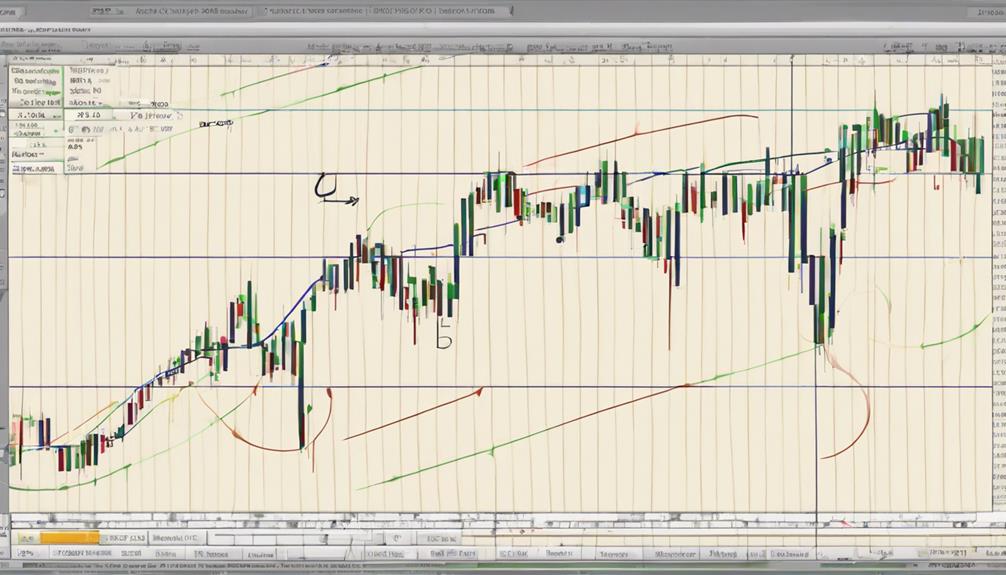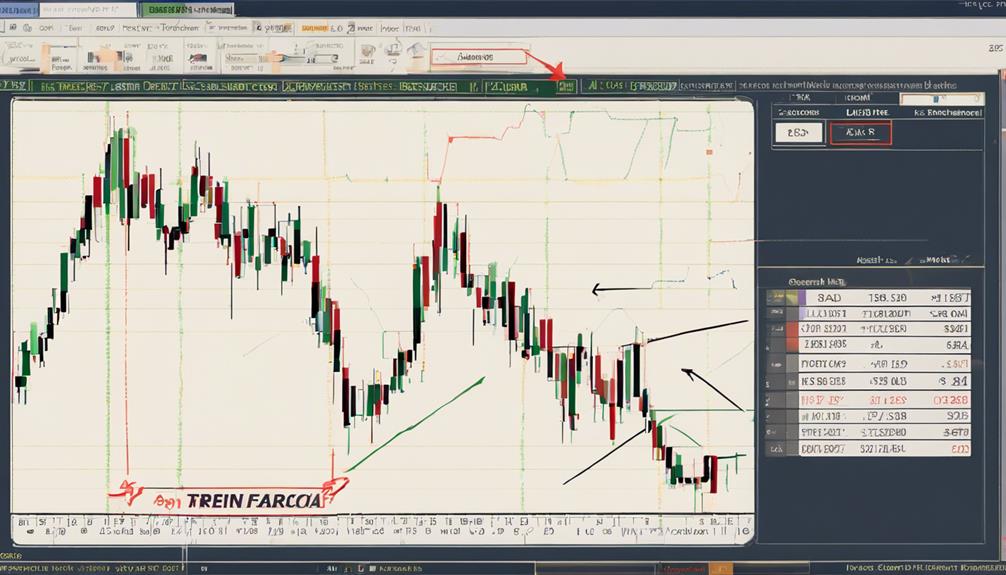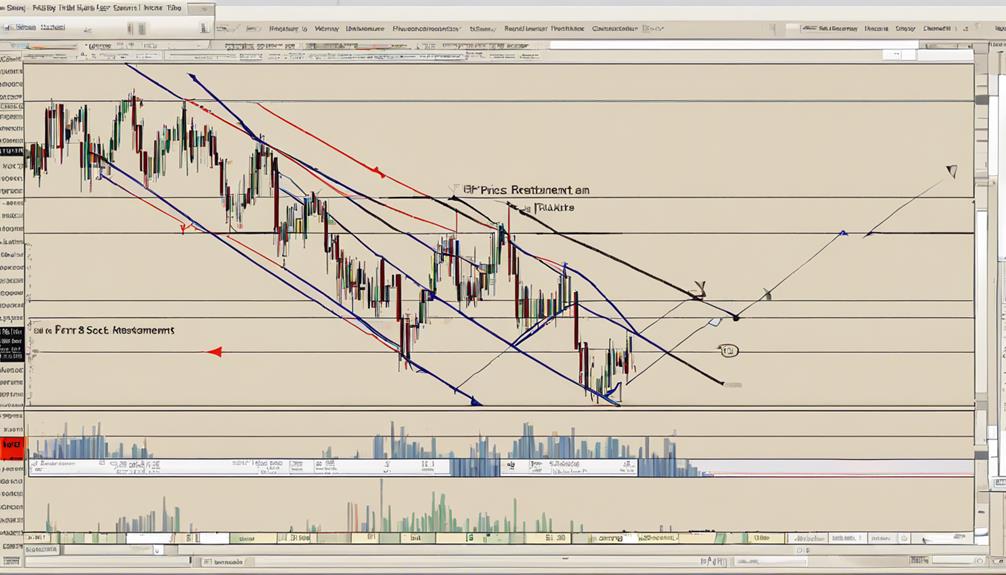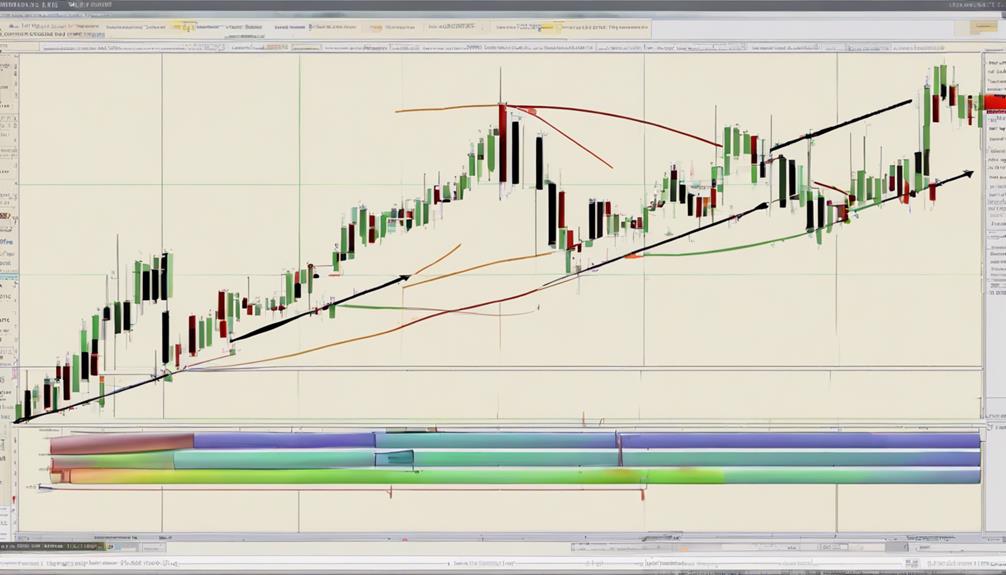For traders seeking strategic insights, Fibonacci retracement in technical trading serves as a significant tool.
Have you ever wondered how this mathematical marvel can assist you in analyzing market trends with precision?
The allure lies in its ability to unveil potential price levels where market shifts may transpire, empowering you to make well-informed trading decisions.
But what makes these Fibonacci levels so revered by traders across various financial markets?
Stay tuned to unravel the mystery behind Fibonacci retracement and its impact on your trading endeavors.
Understanding Fibonacci Retracement Levels
When delving into the realm of technical trading, grasping the concept of Fibonacci retracement levels becomes paramount for identifying potential support and resistance areas.
Fibonacci retracement levels, including 23.6%, 38.2%, 50%, 61.8%, and 78.6%, are derived from the Fibonacci sequence and the Golden Ratio. Traders use these levels to predict price reversals, set targets, place orders, and determine stop-loss levels.
The 61.8% Fibonacci retracement level holds particular significance due to its alignment with the golden ratio, often acting as a strong support or resistance level.
Applying Fibonacci Ratios in Trading

Utilizing Fibonacci ratios in trading provides traders with key levels derived from the Fibonacci sequence, such as 23.6%, 38.2%, 50%, 61.8%, and 100%, enabling them to identify crucial support and resistance areas for making strategic trading decisions.
These Fibonacci ratios play a vital role in technical trading by pinpointing significant price levels where assets may reverse or consolidate. By incorporating Fibonacci retracement levels into their analysis, traders can effectively manage risk by placing stop-loss orders and setting profit targets based on these key levels.
The combination of Fibonacci ratios with other technical indicators enhances trading strategies, allowing traders to align their decisions with market trends and improve overall trade outcomes. Mastering the application of Fibonacci ratios is essential for traders seeking to navigate the complexities of financial markets successfully.
Fibonacci Retracement Calculation Methods

To understand Fibonacci retracement calculation methods, traders must grasp the application of key Fibonacci ratios in determining significant support and resistance levels for making informed trading decisions.
The calculation involves dividing the vertical distance between two price points by key Fibonacci ratios like 23.6%, 38.2%, 50%, 61.8%, and 100%.
These levels create potential support and resistance lines, aiding traders in predicting price reversals and planning entry/exit points.
Fibonacci retracement methods don't follow a specific formula but apply Fibonacci ratios to specific price ranges to identify crucial levels.
Traders use these levels to set stop-loss orders, target prices, and predict potential price corrections within trends.
Understanding the application of Fibonacci retracement levels can provide valuable insights into market dynamics and price movements when using the Fibonacci retracement tool.
Pros and Cons of Fibonacci Retracement

Fibonacci retracement offers traders a valuable tool for identifying potential support and resistance levels based on key Fibonacci ratios. These levels derived from ratios like 23.6%, 38.2%, 50%, 61.8%, and 100% can help predict price reversals and set target prices.
While Fibonacci retracements are widely used in technical trading, their effectiveness may vary due to subjective interpretation. Traders should be cautious as relying solely on Fibonacci retracement levels can lead to missed opportunities or false signals.
To enhance trading strategies and manage risks better, it's advisable to combine Fibonacci retracement with other technical indicators. This integration can provide a more comprehensive analysis of the market and improve decision-making processes.
Importance of Fibonacci Extensions

Drawing Fibonacci extensions on your trading charts can provide valuable insights into potential price targets beyond retracement levels. When utilizing Fibonacci extensions, you can set profit targets based on extended Fibonacci ratios, aiding in forecasting future price levels.
Common extension levels like 161.8%, 261.8%, and 423.6% are frequently used to pinpoint these price targets accurately. By incorporating Fibonacci extensions into your analysis, you gain a deeper understanding of possible extended price moves, allowing you to make more informed trading decisions.
This tool offers traders a structured approach to identifying and capitalizing on potential price movements, enhancing the accuracy of their forecasts and improving overall trading strategies.
How Can Fibonacci Retracement Help in Technical Trading?
Fibonacci retracement stock trading is a valuable tool for technical traders. By identifying potential support and resistance levels, it helps traders make informed decisions. Utilizing key Fibonacci levels, such as 38.2% and 61.8%, traders can accurately anticipate potential price reversals and plan their trades accordingly.
Frequently Asked Questions
How Does Fibonacci Retracement Work?
To understand how Fibonacci retracement works, you analyze price movements to identify key levels indicating potential support or resistance. These levels are based on Fibonacci ratios, aiding traders in setting price objectives and recognizing market trends.
What Is Fibonacci in Technical Analysis?
In technical analysis, Fibonacci is like a musical scale for price movements. Traders rely on key ratios such as 23.6%, 38.2%, 50%, 61.8%, and 100% to pinpoint support and resistance levels, aiding in strategic decision-making.
Do Professional Traders Use Fibonacci Retracement?
Professional traders frequently utilize Fibonacci retracement levels to pinpoint crucial support and resistance areas, forecast price reversals, and establish price targets. This tool, combined with other indicators, aids in making precise trading decisions.
What Is the Best Use of Fibonacci Retracement?
When trading, the best use of Fibonacci retracement is to identify key support and resistance levels for setting price targets effectively. By combining it with other indicators, you can make informed decisions and manage risk efficiently.
Conclusion
You simply can't ignore the power of Fibonacci retracement in technical trading. With its precise levels and proven track record of predicting market movements, using this tool is like having a crystal ball for your trades.
The accuracy and effectiveness of Fibonacci ratios in determining support and resistance levels make it a must-have in any trader's toolkit.
Embrace Fibonacci retracement and watch your trading decisions become more informed and successful.
